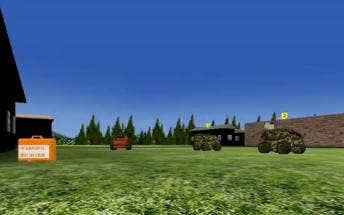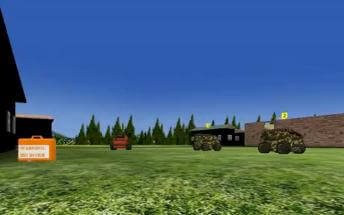Teams of Military Robots To Compete in Australia for Money and Contracts (video)

Share
Soldiers have to use teamwork to explore their surroundings and accomplish their mission. Robots, which are becoming increasingly important parts of militaries all over the world, need to have the same skills. That's where MAGIC comes in. The Multi Autonomous Ground-robotics International Challenge seeks to encourage engineers all over the world to develop teams of autonomous robots that can work together to accomplish military tasks. MAGIC 2010 is sponsored by the US and Australian Departments of Defense and will take place in an undisclosed location near Adelaide, AUS in November. A large pool of applicants has already been narrowed down to 10, with teams from Japan, Australia, US, Turkey, and Canada. Five will receive $100,000 in funding to help complete prototypes of their bots. The top three finishers at MAGIC 2010 will receive $750k, $250k, and $100k prizes and will be given opportunities to work with the US and Australian governments to develop their bots. This competition could do for military robots what the DARPA Grand Challenge did for autonomous cars. We've got an interesting simulation video for you below that demonstrates the kind of robotic teamwork that MAGIC is all about. Watch it below.
While other military robots are armed, MAGIC is seeking to develop robots that don't use traditional weapons. In the challenge robot teams will have to find targets, and then identify them (using "laser painting") for neutralization. These machines will be ground vehicles (on treads or wheels) so they'll be in danger from the threats they identify. Static targets will correlate to IEDs or other explosives, and engineers will have to disable bots that are too close to a simulated explosion. Moving targets (standing in for soldiers) can also disable robots in the simulation and yet still have to be identified and neutralized. There will even be one robot from every team (randomly picked) that will be "destroyed" by a "sniper". It's tough out there in the Outback. Part of the challenge for the robot teams will be to accomplish their mission while facing these dynamic threats.
Be Part of the Future
Sign up to receive top stories about groundbreaking technologies and visionary thinkers from SingularityHub.


Along with dealing with multiple types of threats, the robots competing in MAGIC are themselves divided into types of jobs. Some bots will be sensors, locating and identifying threats and relaying targets to disruptors. Disruptor robots use lasers to "paint" a target and thus neutralize it. This simulates marking a target for artillery fire or drone strikes. Different teams will pursue various configurations and sizes of teams. Virginia Tech is reportedly going to include "jamming" bots to confuse enemy threats. The group from University of Western Australia (whose bots are called MAGIC Intelligent Autonomous Navigators or MAGICIAN) is looking to form a 7 bot force, but teams could be as small as just three robots.
Because MAGIC is aimed at pulling in new talent and new approaches to the field of military support robots, no group that actively receives funding from a government is allowed to participate. This means that Lockheed Martin, Boeing and others can't even compete. As such, most teams are comprised of university research labs paired with private firms. Even without the major defense contractors involved, most of the groups are from the US. Of the 10 finalist teams, 5 are American, 2 are Australian, one is Turkish, one Japanese, and one Canadian.
It will be interesting to see if the non-governmental approach to recruiting talent into the field will succeed. Certainly the cash prizes and potential contracts are an enticing offer. We've seen good results from the XPrize and DARPA Grand Challenge, MAGIC might produce similar interest in getting robots to work together in military strike forces.
We'll have to wait until November to see what kind of robotic mayhem MAGIC produces. With each team or robots required to work autonomously and in tandem, the opportunities for catastrophic failure abound. I'm sure there will be at least one bot that gets stuck running in circles or that keeps trying to disarm a tree. Still, the level of investment is great enough that we could see some really successful work as well. Once robots are intelligent enough to work in tandem, and on their own, it opens the door to larger forms of swarm robotics. Who knows, the military robot reconnaissance strike force of today could help design the cancer fighting nanobot swarms of the future. We could also be giving robots the social tools they need to overthrow us. Not to mention the military prowess...hold on, has anybody thought this one through? I'm starting a competition that gets robots to knit quietly in a corner. Much safer.
[video credit: MAGIC 2010]
[sources: DSTO: MAGIC 2010, Virginia Tech News, University of Western Australia News]
Related Articles

These Robots Are the Size of Single Cells and Cost Just a Penny Apiece

In Wild Experiment, Surgeon Uses Robot to Remove Blood Clot in Brain 4,000 Miles Away

A Squishy New Robotic ‘Eye’ Automatically Focuses Like Our Own
What we’re reading
